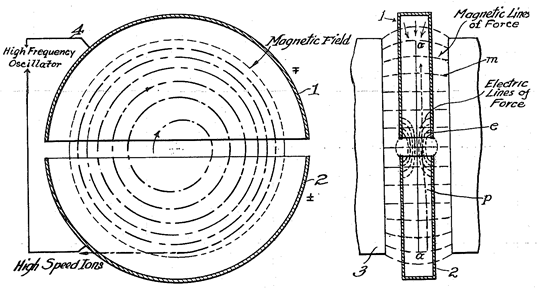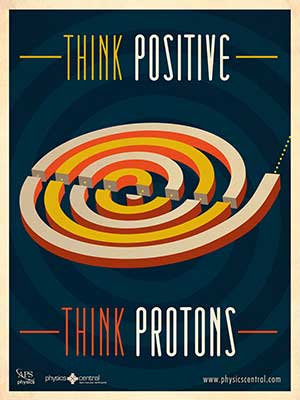Think Positive, Think Protons
A cyclotron might sound like one of the Transformers, but it’s actually a type of particle accelerator — a machine used to speed up atomic nuclei to velocities near the speed of light. Machines like this were originally built for research because physicists are very interested in what happens when particles collide at extreme speeds. This is where particle accelerators got the nickname “atom smashers”. Currently the largest particle accelerator in the world, the Large Hadron Collider, has received a great deal of attention as scientists there sought the elusive Higgs boson.

The initial patent design for a cyclotron particle accelerator
The history of particle physics has involved building progressively bigger and better accelerators. Although earlier particle accelerators may be smaller and less powerful than newer ones, physicists have found all kinds of new uses for old particle accelerators. For example, scientists have used old accelerators to produce Fluorine-18 for use in PET imaging. Another re-purposing of accelerators has led a special kind of cancer treatment called proton therapy.
Proton therapy takes advantage of the fact that all matter, including our bodies, is made up mostly of empty space. When a particle like a proton travels through matter it slows down, transferring energy to the atoms it’s moving through. How much it slows down depends on how fast it’s going; the faster it moves, the less time it has to transfer energy to those atoms, and the less it slows down.
A cyclotron can accelerate protons to such great speeds that they can travel partway through a solid object before they begin to slow down. When the proton slows down, it starts to tear up the matter that it’s travelling through before it comes to a stop. With careful timing, we can use these protons as weapons against cancer, firing them through a person’s flesh and straight into a tumor where they’ll deal most of their damage. This lets us avoid harming healthy tissue while killing off the cancerous cells, without ever cutting a person open. In the past, attacking a tumor with radiation meant damaging the tissue on the way in and the way out, which can create all kinds of problems. Proton therapy can be extremely useful when surgery isn’t an option or when the tissue surrounding the cancer is sensitive, as is often the case when young children have brain tumors.












